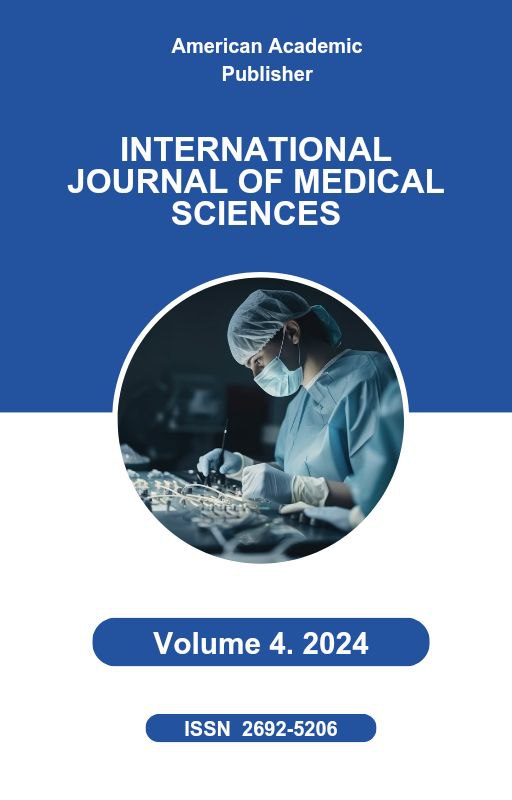 Articles
| Open Access |
https://doi.org/10.55640/
Articles
| Open Access |
https://doi.org/10.55640/
HIGH-WAVELENGTH ENDOVENOUS LASER ABLATION (≥1900 NM): A SYSTEMATIC REVIEW
Minavarkhujayev Ravshankhuja Raxmatkhuja ugli , Assistant of department General surgery №2, Tashkent Medical Academy Phlebologist at the "VarikozOFF" ClinicAbstract
Endovenous laser ablation (EVLA) has become a mainstay treatment for superficial venous insufficiency, traditionally employing laser wavelengths in the range of 810 nm to 1470 nm. In recent years, however, higher-wavelength laser systems (>1900 nm) have been introduced, with the goal of optimizing energy absorption in water and reducing collateral tissue damage. This systematic review evaluates the current literature on endovenous laser ablation with laser wavelengths above 1900 nm, focusing on efficacy, safety, and procedural outcomes. We discuss the theoretical advantages of higher-wavelength lasers, such as improved vein closure rates and reduced postoperative pain, alongside the existing clinical evidence. By synthesizing available data, this review aims to guide clinicians considering the adoption of 1900+ nm laser systems and to highlight areas where additional research is needed.
Keywords
References
Proebstle TM, Moehler T, Gül D, Herdemann S. Endovenous laser ablation with a 1940-nm diode laser for incompetent great saphenous veins: early results of a prospective observational study. Phlebology. 2019;34(10):631-639.
Wittens C, Davies AH, Bækgaard N, et al. Editor’s Choice—Management of chronic venous disease: clinical practice guidelines of the European Society for Vascular Surgery (ESVS). Eur J Vasc Endovasc Surg. 2015;49(6):678-737.
Proebstle TM, Alm J, Gül D, et al. Randomized trial comparing cyanoacrylate closure and endovenous laser ablation of the great saphenous vein at 1940 nm. J Vasc Surg Venous Lymphat Disord. 2021;9(2):304-312.
Gloviczki P, Comerota AJ, Dalsing MC, et al. The care of patients with varicose veins and associated chronic venous diseases: clinical practice guidelines of the Society for Vascular Surgery and the American Venous Forum. J Vasc Surg. 2011;53(5 Suppl):2S-48S.
van den Bos R, Arends L, Kockaert M, Neumann M, Nijsten T. Endovenous therapies of lower extremity varicosities: a meta-analysis. J Vasc Surg. 2009;49(1):230-239.
Kang Y, Lee SH, Cho S. Comparison of early postoperative outcomes using 1940-nm versus 1470-nm radial fiber endovenous laser ablation in incompetent great saphenous veins. Int Angiol. 2022;41(5):463-470.
Park I, Seo TS, Shin J, et al. Safety and efficacy of endovenous laser ablation at 1940 nm: a retrospective case series of 90 patients. Ann Surg Treat Res. 2021;101(3):132-138.
Yamamoto T, Nakaoka Y, Onoda S, et al. Treatment outcomes using a 1940-nm diode laser system for superficial venous reflux: a prospective observational study. Vasc Endovascular Surg. 2023;57(2):102-110.
Kulkarni SR, Slim FJ, et al. Cost-effectiveness of endovenous laser ablation versus surgery for varicose veins. Br J Surg. 2020;107(5):538-544.
Fan CM, Rox-Anderson R. Endovenous laser ablation mechanism of action: is a steam bubble event involved? Lasers Surg Med. 2008;40(1):13-18.
Vuylsteke M, Mese B, Pannier F, et al. Efficacy and safety of new endovenous laser ablation technologies: a systematic review and meta-analysis. Phlebology. 2024;39(1):45-59.
Article Statistics
Downloads
Copyright License

This work is licensed under a Creative Commons Attribution 4.0 International License.

